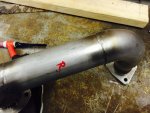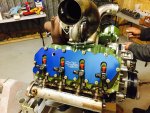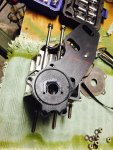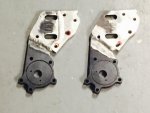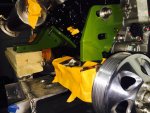What I heard also Joe. I spent a few hours logging data off my buddies truck last week, and IAT was in the 50-60f range most of the time.
Several big HP engine builders (on the marine side) have adopted this Yettie cooler design atop the intake runners. First one I recall seeing was on the late Brad Smith's 2000hp twin turbo engines. Now Chief is building them also.
I see no issue with it if you cut the water off first and let them idle down for a wile before killing the power. But if your in say sub 60f water temps like on my river, and shut those puppies down hot, physics says they are gonna drip like an A-coil in your home AC unit. Where in a race truck with a air-water-air setup, that liquid coolant temp is gonna be much higher due to re-circulation factors.
I'm open to some further research. Say pulling a few glow plugs and running a scope down the bore 24hrs after hot shut down. Maybe my issue came from the engine setting exposed in a wrecked truck before PPE purchased it for the boat. But I can did up the pics of the puddle marks we found, there was heavy pitting.
Several big HP engine builders (on the marine side) have adopted this Yettie cooler design atop the intake runners. First one I recall seeing was on the late Brad Smith's 2000hp twin turbo engines. Now Chief is building them also.
I see no issue with it if you cut the water off first and let them idle down for a wile before killing the power. But if your in say sub 60f water temps like on my river, and shut those puppies down hot, physics says they are gonna drip like an A-coil in your home AC unit. Where in a race truck with a air-water-air setup, that liquid coolant temp is gonna be much higher due to re-circulation factors.
I'm open to some further research. Say pulling a few glow plugs and running a scope down the bore 24hrs after hot shut down. Maybe my issue came from the engine setting exposed in a wrecked truck before PPE purchased it for the boat. But I can did up the pics of the puddle marks we found, there was heavy pitting.



